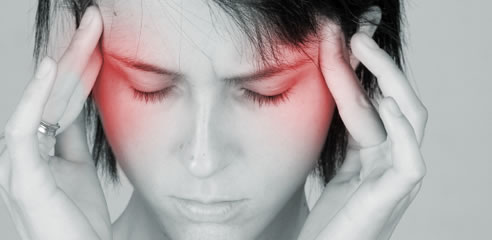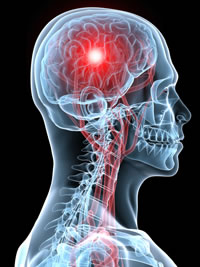
|
|
|
Call our offices at: (310) 274-3481 (800) 964-0404
Beverly Hills
9301 Wilshire Boulevard
Suite 406A
Beverly Hills, California 90210

|
|
 |
|
|
INSURANCE & WORKERS' COMPENSATION
ACCEPTED!
We accept most types of
insurance
providers and specialize in the treatment of
workers' compensation injuries to the hand and upper extremity. |
|
 |
|
Headaches
Tension Headache
Migraine Headache
Cluster Headache
Temporal Headache
Sinus Headache
A headache is defined as a continuous pain in the head and/or upper neck. There are many different types of headaches which can often be confused with one another. According to the National Headache Foundation, over 45 million Americans suffer from chronic, recurring headaches.

It is very important to receive a proper diagnosis in order to treat the type of headache accordingly. At Avosant Surgical Associates, we have a team of pain management specialists that are extremely experienced and qualified to deliver the proper care and management of headaches through a multi-disciplinary approach. The most common types of headaches that will be examined are tension-type headache, migraine headache, cluster headache, temporal arteritis or temporal headache, and sinus headache.
Tension-Type Headache
Tension-type or tension headache is the most common type of headache that afflicts both adults and adolescents and is more common in women, although it affects both sexes. This type of headache is mostly attributed to muscle contraction and can evolve over a period of hours or days and can remain constant over a prolonged period of time. Tension headaches are generally felt on both sides of the head in the frontal, temporal (sides), occipital (back) regions of the head and upper neck and the pain associated is described as aching, pressure, and band-like tightness. This type of headache is not made worse with activity and will have no associated symptoms such as nausea, vomiting or light sensitivity. Common triggers for tension-type headaches can be attributed to physical and emotional stress. A clinical diagnosis of tension headache is best attributed to a specific headache history given by the patient. It is extremely important for patients to get the proper diagnosis by a qualified and experienced clinician because an incorrect diagnosis can lead to improper treatment and no change in the pain associated with tension-type headache. Treatment for tension headache can mostly be managed with over-the-counter (OTC) medications such as aspirin, Motrin, Advil, Tylenol, or Aleve. However, there is a possibility that OTC medications do not work and other treatments are available through a medical doctor. Some available treatments for tension headaches include antidepressants, biofeedback (monitored relaxation training combined with patient education on coping strategies and stress reduction technique), and cervical steroid epidural nerve blocks. It is very important for a patient who believes to be suffering from tension headaches to seek medical help in order to determine the best course of treatment for that individual.
Migraine Headache
 Migraine headaches are recurrent throbbing or pounding headaches that typically affect one side of the head and are often accompanied by nausea, vomiting, and a painless neurologic event called aura. Aura is often experienced by 20% of patients suffering from migraines and typically takes the form of visual disturbances such as blind spots or a zigzag disruption of the visual field, but can also cause hypersensitivity to sound, smell and light. Aura occurs prior to the onset of a migraine and in rare cases can be experienced for more than 24 hours. Migraine pain is moderate to severe and can last up to 3 days and usually occur 1 to 4 times per month. Migraine sufferers are mainly women, and headaches can start in childhood but almost always develop before the age of 30. A family history of migraines is extremely common among sufferers. Migraine headaches can be triggered by changes in sleep patterns or diet, ingestion of certain foods, use of birth control pills, and menstruation. Diagnosis of migraine headache is generally made on the basis of a thorough headache history and physical examination. Patients suspected of having chronic migraine headaches should undergo an MRI of the brain to rule-out underlying radiologic findings . Misdiagnosis of migraine headache can lead to improper treatment and unresolved pain. Migraine headaches can be treated with either abortive or preventative therapies. The main goal of abortive therapy is to prevent a migraine or to stop it at the first sign of onset. The difficulty in this method of treatment is that migraine headaches can peak within minutes from the first signs of onset. The other form of treatment is preventative therapy, mainly used for patients that suffer from very frequent migraines, generally more than one migraine per week. The goal of this treatment is to help control and decrease the frequency and intensity of the headache. If you feel that you are suffering from migraine headaches, it is advised to see a pain-management physician to discuss your specific treatment options.
Migraine headaches are recurrent throbbing or pounding headaches that typically affect one side of the head and are often accompanied by nausea, vomiting, and a painless neurologic event called aura. Aura is often experienced by 20% of patients suffering from migraines and typically takes the form of visual disturbances such as blind spots or a zigzag disruption of the visual field, but can also cause hypersensitivity to sound, smell and light. Aura occurs prior to the onset of a migraine and in rare cases can be experienced for more than 24 hours. Migraine pain is moderate to severe and can last up to 3 days and usually occur 1 to 4 times per month. Migraine sufferers are mainly women, and headaches can start in childhood but almost always develop before the age of 30. A family history of migraines is extremely common among sufferers. Migraine headaches can be triggered by changes in sleep patterns or diet, ingestion of certain foods, use of birth control pills, and menstruation. Diagnosis of migraine headache is generally made on the basis of a thorough headache history and physical examination. Patients suspected of having chronic migraine headaches should undergo an MRI of the brain to rule-out underlying radiologic findings . Misdiagnosis of migraine headache can lead to improper treatment and unresolved pain. Migraine headaches can be treated with either abortive or preventative therapies. The main goal of abortive therapy is to prevent a migraine or to stop it at the first sign of onset. The difficulty in this method of treatment is that migraine headaches can peak within minutes from the first signs of onset. The other form of treatment is preventative therapy, mainly used for patients that suffer from very frequent migraines, generally more than one migraine per week. The goal of this treatment is to help control and decrease the frequency and intensity of the headache. If you feel that you are suffering from migraine headaches, it is advised to see a pain-management physician to discuss your specific treatment options.
Cluster Headache
Cluster headaches are rare and affect mainly the male population. They occur in ‘clusters’ followed by headache-free remission periods and are felt on one side of the head and/or around or behind one eye. The pain has a deep burning quality and is said to be one of the most excruciating pains felt by mankind. People suffering from cluster headaches are generally in their 30s or 40s, have no family history associated, and unlike migraines, do not experience an aura. Cluster headache attacks generally occur approximately 90 minutes after falling asleep and will repeat two to three times a day and last for 45 minutes to 1 hour. Cluster periods often last for 8 to 12 weeks with remission periods of less than 2 years. Cluster headaches may be triggered by small amounts of alcohol, a change in sleep patterns, histamines, nitrates, and high altitude. Unlike other headache syndromes, sufferers may not be able to lie still and may pace or rock back and forth. An MRI of the brain should be taken of any person believed to have cluster headaches. The diagnosis for this type of headache is made on the basis of a targeted, thorough headache history, in order not to misdiagnose. Due to the difficulty in treating cluster headaches, individualized therapy is required and it may take trial and error to find the exact regimen that works for each patient.
Temporal Headache or Temporal Arteritis
Temporal Arteritis is a condition that causes inflammation that damages medium and large arteries, many of which provide blood to the head and temples, causing temporal headache. Temporal headache is located in the temples and is characterized by an aching, continuous pain with mild to moderate intensity. Sufferers of temporal arteritis are generally in their 60s and older and are predominately Caucasian. Patients suffering from temporal arteritis may experience other symptoms beyond temporal headache including but not limited to weight loss, night sweats, depression, tenderness of the scalp, and jaw pain. Patients suspected of having temporal arteritis are advised to immediately see a physician and obtain an erythrocyte sedimentation rate test and/or a temporal artery biopsy. Patients may also need to undergo further blood testing and an MRI or CT scan of the brain. Treatment for temporal headache and temporal arteritis include immediate use of corticosteroids. It is advised to immediately consult a physician if you believe that you may be suffering from temporal headaches and/or temporal arteritis.
Sinus Headache
Sinus headache is caused by inflammation of the sinuses likely the result of an allergic reaction, infection, or in rare cases an abnormal growth. The pain associated with a sinus headache is a constant and deep pressure in the cheekbones, forehead, or bridge of the nose and is often combined with other sinus symptoms. Diagnosis of sinus headaches must be made by a physician and may result in the patient undergoing a CT scan or MRI. Treatments for sinus headaches include antibiotics for the infection, and decongestants or antihistamines to treat the symptoms. Before taking any medications, it is recommended to consult with your physician in order to get proper diagnosis and treatment to avoid making the problem worse.
Headaches can be extremely painful and debilitating causing a severe decrease in the quality of life for many sufferers. It is extremely important for all people experiencing chronic, severe, or repeated headaches to seek medical attention. At Avosant Surgical Associates, our staff of highly qualified pain management specialists and ancillary consultants can assist you in diagnosing and treating your symptoms accurately and professionally.

Top of the Page |
|